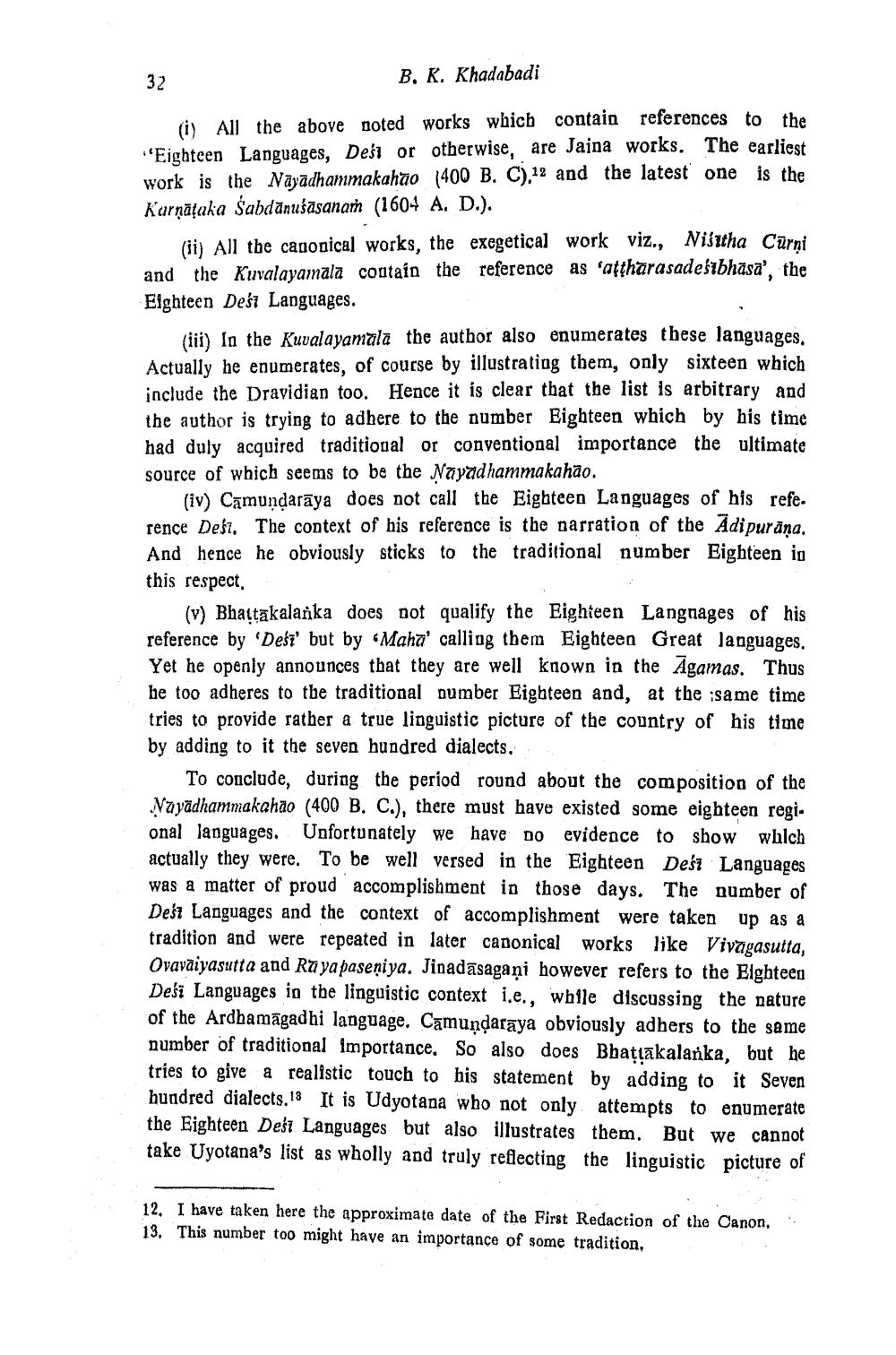________________
B, K. Khadabadi
(i) All the above noted works which contain references to the Eighteen Languages, Desi or otherwise, are Jaina works. The earliest work is the Nayadhammakahao (400 B. C),12 and the latest one is the Karņāļaka Šabdānušāsanam (1604 A. D.).
(ii) All the canonical works, the exegetical work viz., Nišitha Carni and the Kuvalayamala contain the reference as 'attharasadestbhasa' the Eighteen Desi Languages.
(iii) In the Kuvalayamala the author also enumerates these languages. Actually he enumerates, of course by illustrating them, only sixteen which include the Dravidian too. Hence it is clear that the list is arbitrary and the author is trying to adhere to the number Eighteen which by his time had duly acquired traditional or conventional importance the ultimate source of which seems to be the Nayadhammakahao.
(iv) Camundarāya does not call the Eighteen Languages of his refe. rence Debt. The context of his reference is the narration of the Adipuräna. And hence he obviously sticks to the traditional number Eighteen in this respect
(v) Bhattākalarika does not qualify the Eighteen Langnages of his reference by Defi' but by Maha' calling them Eighteen Great languages, Yet he openly announces that they are well known in the Agamas. Thus he too adheres to the traditional number Eighteen and, at the same time tries to provide rather a true linguistic picture of the country of his time by adding to it the seven hundred dialects,
To conclude, during the period round about the composition of the Nayadhammakahao (400 B. C.), there must have existed some eighteen regi. onal languages. Unfortunately we have no evidence to show which actually they were. To be well versed in the Eighteen Deśt Languages was a matter of proud accomplishment in those days. The number of Desi Languages and the context of accomplishment were taken up as a tradition and were repeated in later canonical works like Vivāgasutta, Ovaväiyasutta and Ru ya paseniya. Jinadasagani however refers to the Eighteen Desi Languages in the linguistic context i.e., while discussing the nature of the Ardbamāgadhi language. Camundaraya obviously adhers to the same number of traditional importance. So also does Bhattakalanka, but he tries to give a realistic touch to his statement by adding to it Seven hundred dialects.18 It is Udyotana who not only attempts to enumerate the Eighteen Dest Languages but also illustrates them. But we cannot take Uyotana's list as wholly and truly reflecting the linguistic picture of
12, I have taken here the approximate date of the First Redaction of the Canon. 13. This number too might have an importance of some tradition,




